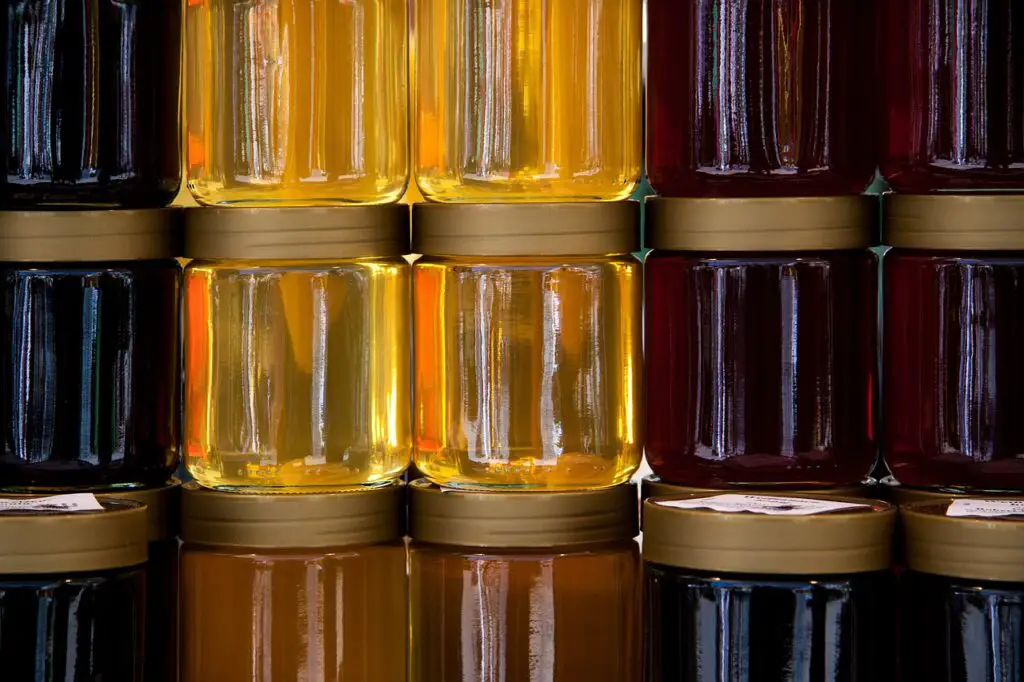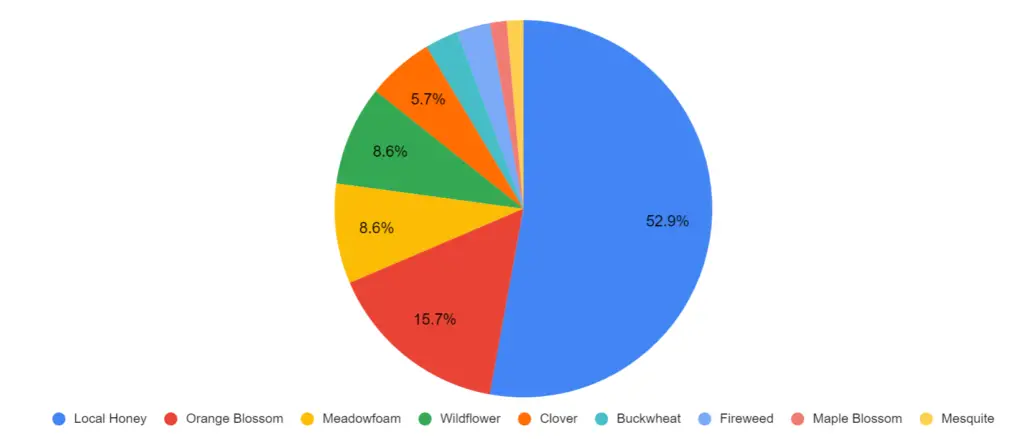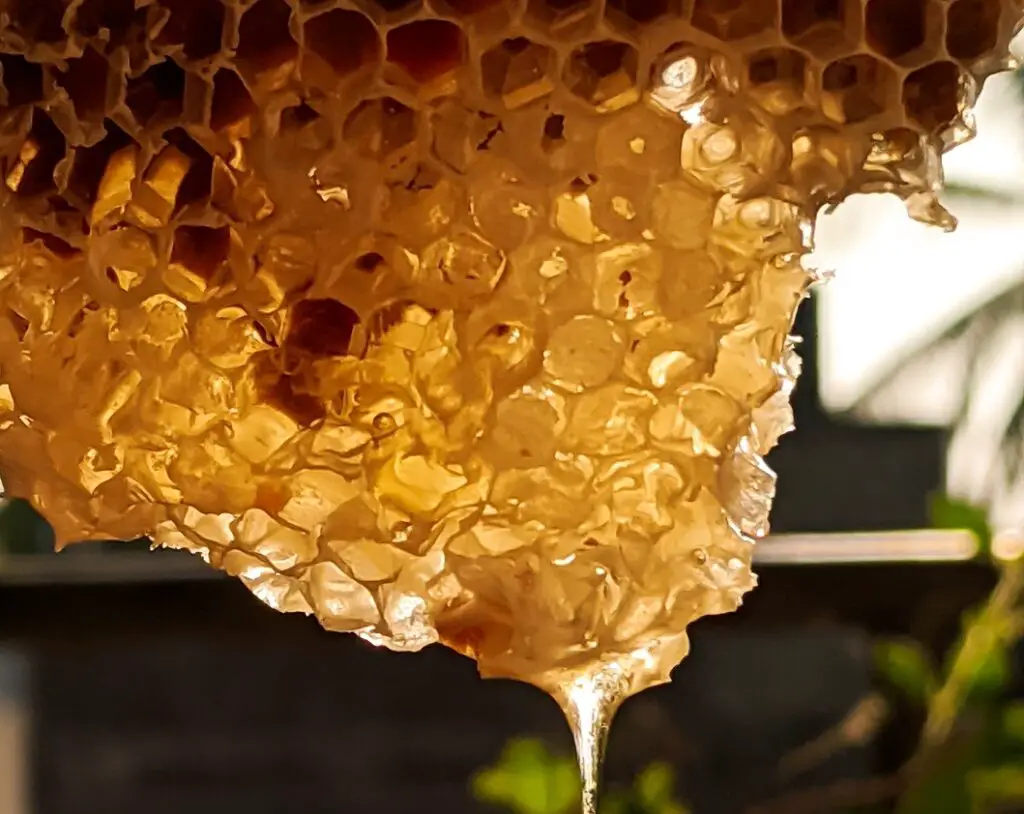
I bet you came here curious about what variety of honey you should buy to make and excellent mead. Well, the answer isn’t so simple and mead makers even have trouble choosing. It’s sort of like choosing a favorite child, but there are at least some clear cut winners.
Mead makers agree, local honey is the best honey to use for mead. The orange blossom varietal is a favorite in mead making circles. Raw locally produced honey has many health benefits and is likely more pure than bulk honey.
Not only are there a lot of varietals of honey to choose from to make your mead, but there are also differences in the way its processed and different colors according to the time of year. So, in order to answer the question of what is the best, we will need to dig into the differences.
The Best Honey Varieties For Mead
When it comes down to it any delicious local honey variety will make an excellent mead. The more unique the honey the more chance for an interesting mead nobody has tasted before. But, there are at least a few stand out favorites.
I conducted a survey of modern mead makers to see just exactly what they loved to use in their own mead, and it was not an easy choice for most. Many just couldn’t decide. I left the choices open for the addition of new honey varietals I may have been unaware of. Local honey was added and quickly made it to the top.

Orange Blossom managed to garner a large number of votes. When I asked local mead maker Jared, owner of Chubby Cheeks, what he loved to use, he also answered orange blossom honey.
Orange blossom honey is prized for its consistent and citrus flavor. It makes for a great honey to begin experimentation in mead. It’s also great for newcomers who want to make sure they nail the mead making process.
How Honey Varietals are Determined
You may be wondering how these unique varieties of honey get their name. It’s from the flowers bees collect their nectar from. These flowers range anywhere from orange blossom to fireweed.
While the honey is named after the predominant flower bees gather from, there is no way to control what flower a bee lands on, so honey is never purely that one variety of flower.
They typically get a large number of that variety of flower by placing bee hives in a farm field of one monocrop. For example a huge field of strawberries in bloom will get the name strawberry blossom honey.
Dark Honey in Mead
Dark honey in mead can mean a number of things. Some of them are beneficial and some of them are bad.
- Dark honey is associated with different varietals depending on the flower type.
- Dark honey can depend on the time of year honey is harvested. Fall honey is typically the darkest honey. Typically flowers that produce dark honey are available at this time.
- Dark honey can be an indication that the honey has been heated. Sometimes this can be good such as a bochet mead, or bad if you are trying for a traditional mead.
When we are making mead its important to strive for a clear beautifully colorful mead. Darker honey can result in a golden color or even darker brown. While lighter honeys can result in a very white or clear honey much like a white wine.

It’s also important to note that darker honeys often carry much larger nutritional benefits than do lighter colored honey. Although this is not always the case it is a good indicator.
Dark Honey Can Mask Potential Problems
The stronger flavors of dark honey may be beneficial for newer mead brewers. Some off flavors that new mead makers can get from stressed yeast may masked by the strong flavor of the honey. This can in turn be more forgiving for new brewers.
On the flip side, dark colored mead can also be an indication of oxygenated mead. This is bad and will result in a bad wet cardboard tasting beverage. If you are using a dark honey it may be more difficult to know if your mead has become oxygenated at least visually.
Raw Honey for Mead
Raw honey is unpasteurized and is the best choice for making mead. The delicate aroma and flavors are kept intact because the honey has not been heated. Raw honey also retains the nutrients and when you consume local raw honey you get some allergy relief benefits.
There are two different stances on making mead:
- Honey should be heated and mixed with water.
- No heat must be added anywhere in the mead making process.
It is thought that heating honey will destroy the delicate flavor and aroma of honey. The problem with honey pasteurization is it requires heat.
It’s also curious why they would even need to pasteurize honey since it is an anabolic substance and will not become infected unless moisture is added.

A friend over at Beekeeping for newbies explains that there are a few reasons why honey may be heated:
- Lower glucose levels to retard crystallization.
- Raw honey may begin to ferment on its own if moisture is introduced.
- Exploitation of honey grading to increase perceived value.
If you want to learn more about raw honey make sure to visit the site as it covers everything you want to know about honey and becoming a beekeeper.
Two Forms of Raw Honey
There are essentially a few forms of raw honey but two stand out. Raw bottled honey and raw honey in honeycomb form. If you are making a mead I would not suggest buying it in honeycomb form as it will be much more difficult to make a mead.
Instead buy raw honey from the bottle or pail. This honey is strained right before its bottled and retains its nutrients. You also won’t have honeycomb and bee parts in your honey, although I doubt it will cause any issues as it will just contribute to trub at the bottom of your fermentation vessel.
Is Raw Honey Organic?
You may be wondering whether or not raw honey is organic since its unadulterated and pure. The answer however, is not so simple. This is because humans have no control over what flower a bee lands on.
There may be honey on the market that says its organic, but it will never be 100% certain. Instead its more of a close enough approach, as much of the crops the bees gather nectar from are organic.
Cheapest Honey for Mead
The most common and typically cheapest type of honey is clover honey. This honey is usually supplied in bulk and has a rather consistent flavor. The consistency in flavor is because blending from so many sources typically creates a uniform flavor.
Beware of some mass produced bulk honey. Because of the price honey fetches there is room for bad actors to adulterate their honey by adding extras to the pure honey. This can often come in the form of high fructose corn syrup.
This is often why mead makers like to support their local honey producers, as they can help them compete against these bad actors and be sure their honey source is pure.
A Trusted Online Source for Honey
I typically buy my honey locally, but they don’t always have some of the more interesting types of honey that I may want. For example Glory Bee sells an interesting tropical honey, which is as close as organic as you can get. It’s not always in stock but when it is be sure to grab some. They also sell the typical bulk clover that you can be sure is pure.

